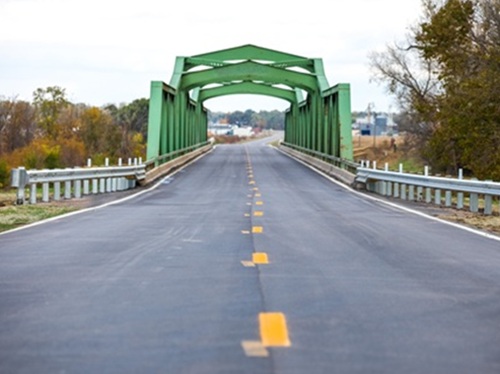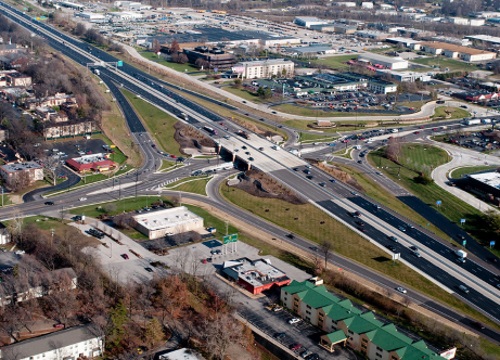The Federal Highway Administration issued a guidance document on April 27 to provide “clarification” to both its division offices and state departments of transportation on leveraging highway right-of-way or ROW for “certain uses” such as climate change, equitable communications access, and energy reliability.
[Above photo by the Missouri DOT]
The agency added that its guidance document aims to support “consistent utilization” of the ROW for renewable energy generation, electrical transmission and distribution projects, broadband projects, vegetation management, inductive charging in travel lanes, alternative fueling facilities, and other “appropriate uses.”

Those “appropriate uses” especially encompass projects related to electrification and the deployment of connected and autonomous vehicles or CAVs, FHWA stressed.
The agency added that its guidance seeks to help state DOTs gain the “full value and productivity” of existing ROW assets while also reducing or eliminating the ongoing maintenance expenses.
For example, state DOTs may create new revenue opportunities through participation in public-private-partnerships to develop renewable energy projects – such as solar arrays – and negotiating agreements that include land lease or land license payments and power purchase agreements that reduce their energy costs, both actual and over the life cycle of the project.

In considering state DOT requests pertaining to such ROW uses, FHWA is encouraging its division offices to develop “programmatic approaches, where appropriate” under the National Environmental Policy Act and Section 106 of the National Historic Preservation Act.
Several states – notably California – expect this guidance to help them further a number of ROW-related projects.
“[This FHWA] guidance makes it possible for California to greatly expand the network of electric vehicle charging stations along highways [and] supports the state’s broadband deployment efforts,” noted David Kim, secretary of the California State Transportation Agency or CalSTA, which oversees the California Department of Transportation.
“[It] bolsters the historic efforts we’re making to transform our transportation system,” he said in a statement.
 Nation
Nation
Registration Open for 2026 AASHTO Washington Briefing
December 12, 2025 Nation
Nation

